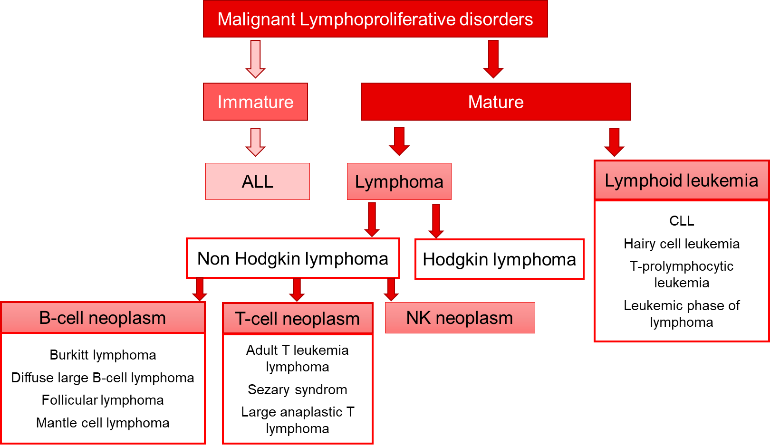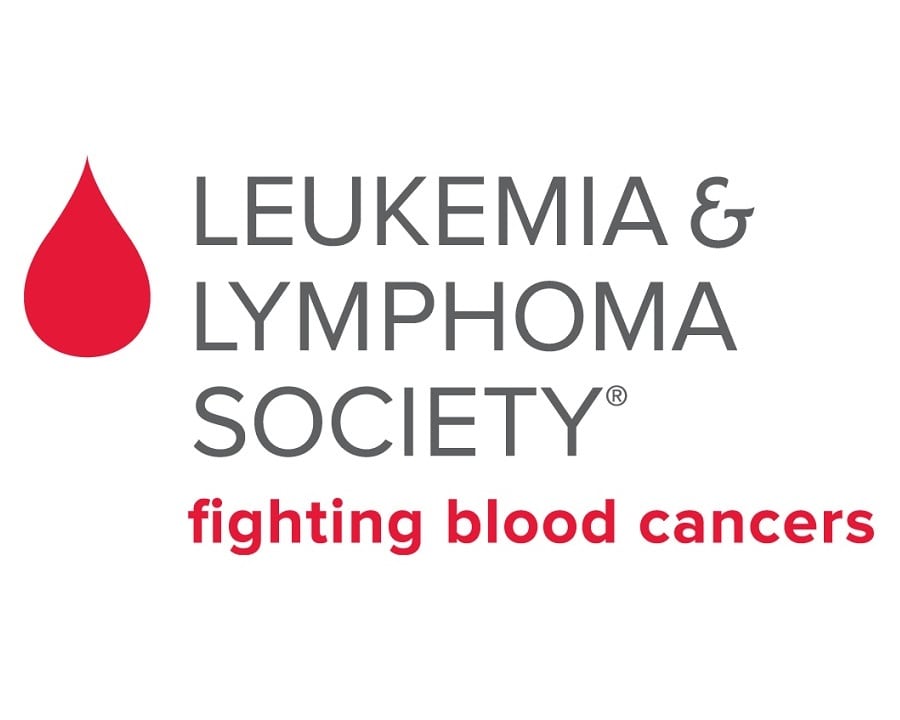Chronic Lymphoproliferative Disorders
Description
Last update: October 1st, 2019
Chronic Lymphoproliferative Disorders are a heterogeneous group of diseases characterized by (mono)clonal expansion and accumulation of mature-appearing lymphocytes which carry a proliferative and/or survival advantage over their normal counterparts in different organs such as bone marrow, blood and lymph nodes. This translates into progressive accumulation of clonal cells and their products causing PB lymphocytosis, BM lymphoid infiltrates, enlargement of one or multiple other tissues (for example, lymphadenopathy, splenomegaly or other organomegalies), or emergence of a serum monoclonal component.
According to the World Health Organization (WHO), which reflects international consensus and it is based on pathological, genetic and clinical factors, lymphoid neoplasms are classified according to the stage on maturation and the lineage where the neoplastic transformation occurs:
Mature Lymphoid Neoplasms:
- Non-Hodgkin Lymphoma
- B-cell Lymphoma
- T and NK-cell Lymphoma
- Hodgkin Lymphoma
- Chronic Lymphocytic Leukemia
Determination of the subtype and the stage of the disease is very important, as they are factors that affect prognosis (chance of recovery) and treatment options.
1. Non-Hodgkin Lymphoma
Non-Hodgkin Lymphoma (NHL) is a cancer that affects the lymphocytes of the body’s lymph system and represents the 3% of all cancers. Depending on the type of lymphocyte affected, there are 2 main types of NHL:
- B-cell Lymphoma: accounts about 90% of the NHLin western countries
- T and NK-cell Lymphoma: make up between 10-15% of NHL and are more frequent in Asian countries.
In addition, NHL can also be grouped based on how quickly they grow and spread, either “indolent”, which grow and spread slowly; or “aggressive” which grow quickly, and usually need to be treated right away so it cannot spread to other parts of the lymph system such as the liver, brain, or bone marrow.
2. Hodgkin Lymphoma
Hodgkin Lymphoma (HL) usually starts in the B lymphocytes of lymph nodes. The different types of HL can grow and spread differently and may be treated differently:
- Classic Hodgkin lymphoma (CHL) makes up more than 9 in 10 cases of HL in development countries and has four subtypes.
- Nodular lymphocyte-predominant Hodgkin lymphoma (NLPHL) accounts for about 5% of cases.
3. Chronic Lymphocytic Leukemia
Chronic Lymphocytic Leukemia (CLL) is the most frequent leukemia in adults, which starts in the lymphocytes of the bone marrow. The most common form of CLL starts in B lymphocytes, but there are other rare. It often builds up slowly but over time, the cells spread to other parts of the body, including the lymph nodes, liver, and spleen; what gives rise to two different types of CLL, the one that grows very slowly, and the one that grows faster.
Resources
Publications:
- Costa ES, et al. A new automated flow cytometry data analysis approach for the diagnostic screening of neoplastic B cell disorders in peripheral blood samples with absolute lymphocytosis. Leukemia. 2006 May; 20:1221-1230. Go to publication.
- van Dongen JJ, et al. EuroFlow antibody panels for standardized n-dimensional flow cytometric immunophenotyping of normal, reactive and malignant leukocytes. Leukemia. 2012 Sep; 26(9):1908-75. Go to publication.
- Costa ES, et al. Automated pattern-guided principal component analysis of B-cell chronic lymphoproliferative disorders. 2010 Nov. Leukemia; 24(11): 1927-33. Go to publication.
- Arber DA, et al. The 2016 revision to the World Health Organization classification of myeloid neoplasms and acute leukemia. Blood. 2016 May;127(20):2391-405. Go to publication.





